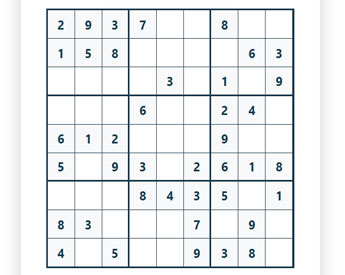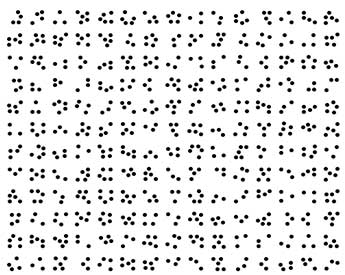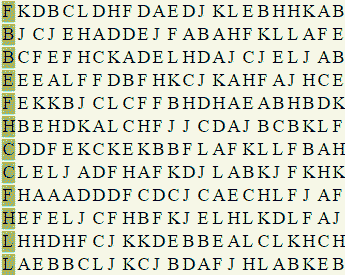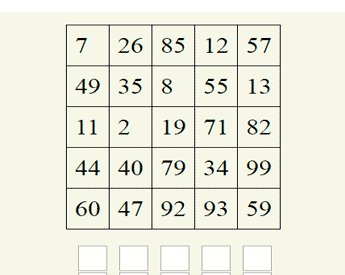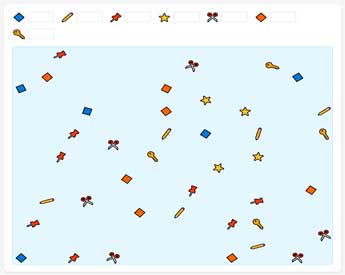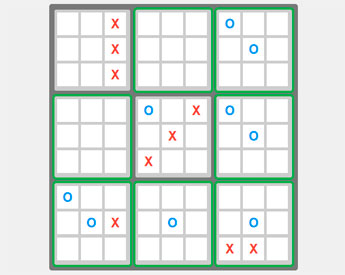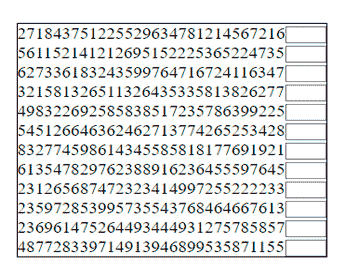|
METODORF.COM
Interactive Portal-Book of Methods of Self-Development
|
|||||||||||||||||||||||||||||||||||||||||||||||||||||||||||||||||||||||||||||||||||||
Bourdon test with numbers-online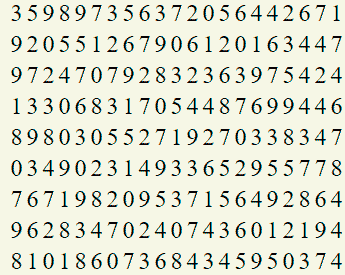 In fact, the digital version of the Bourdon test can be the simplest of all the variants of the Bourdon test - since numbers are easier to perceive than, for example, letters or rings with a certain direction of the gap, but this does not in any way reduce the possibilities of this type of Bourdon test for assessing the possibilities of our attention. Instructions for performing the test Bourdon's test digital version - online:The task of the test subject when performing this form of Bourdon's test is to, sequentially looking through row by row of the table with numbers, find and highlight those numbers that were given in the assignment. It can be either one number or two, depending on the test variant. The time to complete the test is slightly less than for most types of proofreading tests, namely 3 minutes. In case you cope with the task earlier, click on the "Submit" button. Test for passing on smartphones with a small screen resolution. A string of 40 digits is divided into two lines of 20 digits. In the results, two rows will be counted as one row. Link to the test below: Take the "Bourdon Test - Numbers" test online (for small screens) Test to pass on wide screen devices - standard 40 digits per line: Take the "Bourdon Test - Numbers" test online (for standard monitors) Please be aware that taking this test on the small screen (smartphone screens with low resolution) variant can interfere with an accurate and objective assessment of your attentional abilities, because as the screen width decreases, the field of view narrows and, as expected, attention span increases, aimed at checking smaller strings with numbers. At the same time, it is likely that the total number of lines viewed in the allotted time in the mobile version of the test will be lower. Passing the "Bourdon Test - Numbers" test on devices with a standard width (on personal computers) will allow you to get more objective data about the abilities of your mind. Bourdon test calculated indicators:
© Oleg Akvan metodorf.com Comment block
Mari
2025-11-04 10:15:53
Comment
Mari
2025-11-04 10:16:37 I accept! Leave a comment:
Advertisement:
|
|||||||||||||||||||||||||||||||||||||||||||||||||||||||||||||||||||||||||||||||||||||
© 2014 - 2026 Oleg Akvan metodorf.com
All rights reserved!
All rights reserved!
